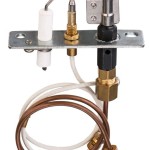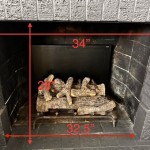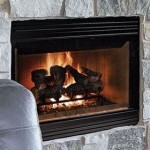Simple Fireplace Mantel Designs: A Guide to Clean and Elegant Fireplace Enhancements
The fireplace serves as a focal point in many living spaces, offering warmth and a visual anchor for the room. The mantel, positioned above or surrounding the fireplace opening, provides an opportunity to enhance the fireplace's aesthetic appeal and functionality. While elaborate and ornate mantels can be visually impressive, simple fireplace mantel designs offer a timeless elegance and versatility that can complement a wide range of interior design styles. This article explores various simple fireplace mantel designs, focusing on their key features, suitability for different aesthetics, and practical considerations.
A simple mantel design prioritizes clean lines, minimal ornamentation, and a focus on highlighting the natural beauty of the materials used. These designs often incorporate a single shelf, a streamlined surround, or a combination of both. The key to a successful simple mantel lies in the careful selection of materials, proportions, and the overall integration with the surrounding architecture.
Understanding the Appeal of Simplicity
The enduring popularity of simple fireplace mantel designs stems from several factors. First, simplicity offers versatility. A clean and understated mantel can seamlessly integrate into various design schemes, from minimalist and modern to traditional and rustic. Its neutrality allows it to adapt to changing décor trends and personal preferences without appearing out of place. Unlike more elaborate designs that can become dated or clash with evolving styles, a simple mantel provides a foundation for creating a timeless and adaptable space.
Second, simple designs often create a sense of spaciousness and airiness. By avoiding excessive ornamentation and bulky features, these mantels contribute to a cleaner and less cluttered visual environment. This is particularly beneficial in smaller rooms, where a minimalist approach can help to maximize the perceived size of the space. A simple mantel design also allows the fireplace itself to become the primary focus, drawing attention to the warmth and ambiance it provides rather than competing for attention with intricate details.
Finally, simple mantels are often more cost-effective than their more elaborate counterparts. The reduced complexity in design and construction typically translates to lower material and labor costs. This makes simple mantels an attractive option for homeowners seeking to enhance their fireplace without exceeding their budget. Furthermore, the ease of installation and maintenance associated with simple designs can also save time and effort in the long run.
Exploring Different Simple Mantel Styles
While simplicity is a common thread, simple fireplace mantel designs can manifest in various styles, each with its unique characteristics and appeal. These styles often draw inspiration from different architectural periods and design philosophies, allowing homeowners to select a mantel that best complements their existing décor.
One popular style is the minimalist mantel, characterized by its ultra-clean lines, absence of ornamentation, and focus on functionality. These mantels often consist of a single floating shelf made from materials such as concrete, wood, or metal. The minimalist approach emphasizes the essential elements of the fireplace, creating a sleek and modern aesthetic. The color palette is typically neutral, focusing on whites, grays, and blacks to further enhance the sense of simplicity and sophistication. Minimalist mantels are particularly well-suited for contemporary homes and spaces that prioritize clean and uncluttered design.
Another common style is the farmhouse mantel, which embodies a rustic and charming aesthetic. These mantels often feature reclaimed wood, distressed finishes, and simple, unadorned lines. The natural imperfections and character of the wood are celebrated, adding a touch of warmth and authenticity to the space. Farmhouse mantels typically have a solid and substantial presence, reflecting the durability and practicality associated with rural life. They are often paired with vintage or antique accessories, such as iron candlesticks or woven baskets, to further enhance the farmhouse theme.
A third style is the transitional mantel, which blends elements of traditional and contemporary design. These mantels often feature clean lines and simple silhouettes, but may incorporate subtle details such as beveled edges, recessed panels, or understated moldings. The material palette is typically a mix of natural and manufactured materials, such as wood, stone, and tile. Transitional mantels offer a versatile and adaptable option that can complement a wide range of interior design styles. They provide a balance between classic elegance and modern simplicity, creating a timeless and sophisticated look.
Beyond these styles, there are numerous other variations of simple mantels, including those inspired by mid-century modern design, Scandinavian minimalism, and industrial chic. Each style offers its unique take on simplicity, allowing homeowners to find a mantel that perfectly suits their personal tastes and the overall aesthetic of their home.
Key Considerations in Simple Mantel Design and Installation
Selecting and installing a simple fireplace mantel involves careful consideration of various factors to ensure a successful outcome. These factors include the size and proportions of the mantel, the materials used, the surrounding architectural context, and the applicable building codes and safety regulations.
The size and proportions of the mantel should be carefully considered in relation to the size of the fireplace opening and the overall dimensions of the room. A mantel that is too small may appear insignificant and lost in the space, while a mantel that is too large may overwhelm the fireplace and disrupt the balance of the room. A general rule of thumb is to ensure that the mantel is proportional to the fireplace opening and that it extends slightly beyond the sides of the firebox. The height of the mantel should also be considered, ensuring that it is at a comfortable viewing height and that it does not obstruct the view of the fire.
The choice of materials plays a crucial role in the overall aesthetic and durability of the mantel. Common materials include wood, stone, brick, and metal. Wood offers a warm and versatile option that can be easily customized with paint, stain, or other finishes. Stone and brick provide a more substantial and fire-resistant option that is well-suited for traditional and rustic styles. Metal offers a sleek and modern look that is often used in minimalist and industrial designs. The selection of materials should be based on the desired aesthetic, the budget, and the fire safety requirements.
The surrounding architectural context should also be taken into account when selecting a simple mantel design. The mantel should complement the existing architectural features of the room, such as the wall finishes, trim details, and overall style. A modern mantel may look out of place in a traditional home, while a rustic mantel may clash with a sleek and contemporary space. Consider the existing color palette and textures in the room and select a mantel that harmonizes with the overall design.
Finally, it is essential to adhere to all applicable building codes and safety regulations when installing a fireplace mantel. These regulations typically specify minimum clearances between the mantel and the fireplace opening, as well as requirements for fire-resistant materials. It is recommended to consult with a qualified professional to ensure that the installation meets all applicable codes and standards. It is also important to consider the weight of the mantel and to ensure that the wall structure is strong enough to support it securely. Proper installation is crucial to ensure the safety and longevity of the mantel.
In conclusion, simple fireplace mantel designs offer a versatile and elegant way to enhance the aesthetic appeal of a fireplace. By prioritizing clean lines, minimal ornamentation, and careful material selection, these mantels can complement a wide range of interior design styles. Careful consideration of size, proportions, materials, architectural context, and safety regulations is essential to ensure a successful and visually pleasing outcome.

53 Best Fireplace Mantel Designs To Ignite Your Creativity Classic White Mantels

36 Fireplace Decor Ideas Modern Mantel

10 Fireplace Mantel Decorating Ideas Full Service Chimney

15 Best Fireplace Ideas Makeover Modern Contemporary

How To Make An Easy Diy Fireplace Mantel Sprucing Up Mamahood

Simple Spring Mantel Decor Taryn Whiteaker Designs

Simple And Modern Mantel Makeover Brepurposed

36 Fireplace Decor Ideas Modern Mantel

Summer Mantel Decor 72 Ideas To Refresh Your Fireplace Bird

Contemporary Fireplace Surrounds And Mantels Ideas Direct Fireplaces
Related Posts








